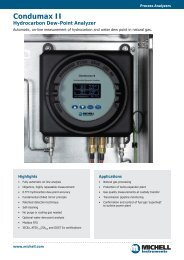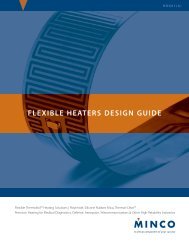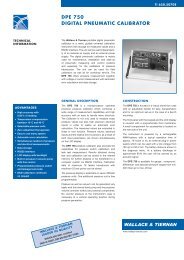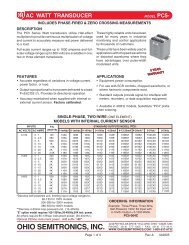FLEX CIRCUITS DESIGN GUIDE
Minco Flex Circuits Design Guide - BiS Sistem
Minco Flex Circuits Design Guide - BiS Sistem
- No tags were found...
Create successful ePaper yourself
Turn your PDF publications into a flip-book with our unique Google optimized e-Paper software.
Glossary<br />
Rigid-flex<br />
A circuit containing both rigid and flexible areas. The rigid layers<br />
have conductors and plated through-holes connecting<br />
them to other layers.<br />
Selective plating<br />
A method of plating flex circuits so that only the circuit’s<br />
through-holes and surrounding pads are plated. This greatly<br />
adds to a circuit’s flexibility.<br />
Static application<br />
The use of a flex circuit in an environment that requires flexing<br />
during installation and maintenance, but not in operation.<br />
Steel rule die (SRD)<br />
A tool used in a punch press, consisting of steel cutting blades<br />
in a pattern, embedded into a maple plywood base.<br />
Tear stops<br />
Copper, polyimide, or Teflon guards that are located in the inner<br />
corners of polyimide-insulated flex circuits in order to prevent<br />
propagation of tears.<br />
Through-holes<br />
Holes that are drilled through the layers of a flex circuit in order<br />
to have component access to those layers. Connection from<br />
one layer to the next is provided by plating the through-hole<br />
walls with a thin layer of copper.<br />
Trim line<br />
The area defined by a design engineer as the final cut-out area<br />
around a flex circuit.<br />
Trim Line<br />
Stiffener<br />
Flexible or rigid pieces of material (usually polyimide or FR-4)<br />
added to flex circuits to reinforce them for component mounting.<br />
There are no conductors on stiffeners, as compared to rigidflex<br />
circuits.<br />
Substrate<br />
A layer of insulator bonded on one or both sides with foil.<br />
Unbonded areas<br />
A flex circuit design technique that involves providing an insulating<br />
layer between every conductive layer of a flex circuit, but<br />
with no adhesive bonding between the insulating layers in certain<br />
areas of the circuit. This technique improves circuit flexibility.<br />
Via<br />
A plated through-hole with no cover access holes that provides<br />
connection for internal layers.<br />
Tangency<br />
A condition that occurs when the edge of a stiffener or cover<br />
access hole is flush with the edge of a through-hole.<br />
Through-Hole<br />
Stiffener<br />
30







